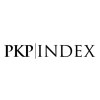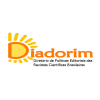HALITOSE, QUANDO E COMO INTERVIR: REVISÃO INTEGRATIVA
Samenvatting
Trefwoorden
Volledige tekst:
PDF (Português (Brasil))Referenties
ANNEMIEK, M. W. T; BROEK, L. F; BAAT, C. A review of the current literature on aetiology and measurement methods of halitosis. Journal of Dentistry, n. 35, p. 627-635, 2007.
BOLLEN, C. M. L. Halitosis: the multidisciplinary approach. International Journal of Oral Science, v. 4, p. 55-63, 2012.
BROEK, A.; FEENSTRA, L.; BAAT, C. A review of the current literature on management of halitosis. Oral Diseases, v. 14, p. 30-39, 2008.
CAMPISI, A. M. et al. Halitosis: Could it be more than mere bad breath? Internal and Emergency Medicine., v. 6, p. 315-319, 2011.
CURD, M. L.; BOLLEN, T. B. Halitosis: the multidisciplinary approach. International Journal of Oral Science, v. 4, p. 55-63, 2012.
FABER, J. Halitose. Revista Dental Press de Ortodontia e Ortopedia Facial, v. 14, p. 1-15, 2009.
FUKUI, Y. et al. Diurnal changes in oral malodour among dental-office workers. Int Dent J., v. 58, n. 3, p. 159-166, 2008.
KIZHNER, V. D. X.; KRESPI, Y. A new tool measuring oral malodor quality life. European Archives of Oto-Rhino-Laryngology, v. 268, p. 1227-32, 2011.
HUGHES, F.; MCNAB, R. Oral malodour – a review. Arch Oral Biol., v. 53, n. 1, p. 1-7, 2008.
LODHIA, P. et al. Effect of green tea on volatile sulfur compounds in mouth air. J Nutr Sci Vitaminol., v. 54, p. 89-94, 2008.
MACHADO, N. et al. Halitosis: a review of basic principles. Braz J Oral Sci., v. 7, n. 26, p. 1627- 1630, 2008.
ONGOLE, R. S. N. Halitosis: much beyond oral malodor. Kathmandu University Medical Journal, v. 8, n. 2, p. 269-275, 2010.
PERUZZO, D.; SALVADOR, S.; NOGUEIRA-FILHO, G. Flavoring agentespresente in a dentifrice can modify volatile sulphur compounds (VSCs) formation in morning bad breath. Braz Oral Res., v. 22, n. 3, p. 252-257, 2008.
PRAMOD P. et al. Halitosis: A silent affliction!.Chronicles of Young Scientists., v.3, n. 4, 2012.
RAYMAN, S.; ALMAS, K. Halitosis among racially diverse populations: an update. Int. J. Dent. Hygiene, v. 6, p. 2-7, 2008.
ROSING, C.; LOESCHE, W. Halitosis: an overview of epidemiology, etiology and clinical management. Braz J Oral Res., v. 25, n. 5, p. 466-471, 2011.
SCULLY, C. J. G. Halitology (breath odour: aetiopathogenesis and management). John Wiley & Sons A/S, v. 18, p. 333-345, 2012.
SHINADA, K. et al. Effects of a mouthwash with chlorine dioxide on oral malodor and salivary bacteria: a randomized placebo-controlled 7-day trial. BioMed Central., v. 11, n. 14, p. 2-11, 2010.
SILVA, M. F.; LEITE, F. R. M.; FERREIRA, L. B.; POLA, N. M.; SCANNAPIECO, F. A.; DEMARCO, F. F.; NASCIMENTO, G. G. Estimated prevalence of halitosis: a systematic review and meta-regression analysis. Clin Oral Investig., v. 22, n. 1, p. 47-55, 2018.
SILVA M. F.; CADEMARTORI, M. G.; LEITE, F. R. M.; LÓPEZ, R.; DEMARCO, F. F.; NASCIMENTO, G. G. Is periodontitis associated with halitosis? A systematic review and meta-regression analysis. Journal of clinical periodontology, v. 44, n. 10, p. 1003-1009, 2017.
VASCONCELOS, L. Clinical knowledge of dentists and physicians on the diagnosis and treatment of the patient complaining of halitosis. Rev OdontoCienc., n. 26, p. 232-237, 2011.
YAEGAKI, K.; COIL, J. Examination, Classification, and Treatment of Halitosis; Clinical Perspectives. J. Can. Dent. Assoc., v. 66, p. 257-261, 2010.
DOI: http://dx.doi.org/10.25191/recs.v5i1.3609
Copyright (c) 2020 Revista Expressão Católica Saúde
ISSN: 2526-964X
| Revista Associada |
|---|
 |
 |
| Indexadores | |||||||
|---|---|---|---|---|---|---|---|
 |
 |
 |
 |
 |
 |
 |
 |
 |

Este obra está licenciado com uma Licença Creative Commons Atribuição 4.0 Internacional.
